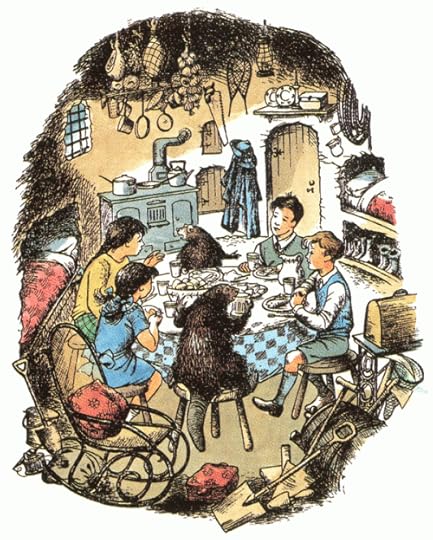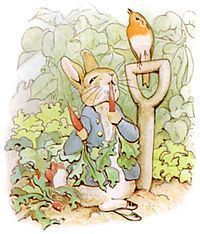Sharing the Table in Children’s Literature
When my class recently read The Lion, the Witch, and the Wardrobe, I brought in two small boxes of Turkish Delight, because I remember first reading that novel and wondering what the candy that Edmund craved enough to endanger his siblings tasted like. It’s a defining moment when Edmund first accepts the candy, which one student thought of as a step up from gummy bears, from the White Witch, just as the brown eggs, lightly boiled, buttered toast, and sugar-topped cake that the faun prepares for Lucy in his snug home makes her a citizen of Narnia. When Lucy returns with Susan and Peter to find Mr. Tumnus’s house ravaged, she thinks of that shared food and knows that scared as she is, she can’t turn back. She owes that faun, and will do whatever she can to save him. Lucy, Susan, and Peter becomes allies with Mr. and Mrs. Beaver over fresh trout, potatoes, sticky marmalade rolls, and tea. The fact that Edmund can eat and disappear signals us to how dangerously he might betray them.
When someone suggested to C.S. Lewis that he used food because he couldn’t write about sex in his books for children, he told them, No, he just really liked food. Meals and treats can be tricks or pacts, depending on how they’re doled out. Perhaps we first meet this motif in fairy tales. Hansel and Gretel get in a predicament because the family is starving. They first trail bread crumbs, then are lured by a candy house. Another fall is caused by Rapunzel’s father stealing rampion, a sort of lettuce, from the garden of a neighbor, and trades in his daughter to save himself and his wife. In Snow White, one bite from the witch’s poisoned apple turns the plot.
Food and fire can devastate, but perhaps more often stand for home, safety and love. Good and food is separated by a letter, as I realized when I mis-typed it. Peter Rabbit starts out with a warning about his father ending up in Mrs. McGregor’s pie. Peter journeys forth regardless and feasts on lettuces, French beans, and radishes before being discovered by the farmer with a hoe. He escapes, but his mother gives him only a table-spoonful of chamomile tea for supper, while Flopsy, Mopsy, and Cotttontail get bread, milk, and blackberries.
We just read Mary Poppins with its gingerbread with stars, plum cakes, wholemeal scones, tapioca, sherbet, and licorice offering times of togetherness and delight, maybe most particularly when the tea table is in the air under the ceiling, combining those images of flight – the arrival on the umbrella, the conversations with stars – with what’s homey. We read Peter Pan, where the hero who won’t grow up blurs the real and make-believe so much that he can eat imaginary food and get fat, though in this play-turned-book, sewing and tidying are more metaphors for lulls between adventures than eating.
Next we’re moving on to books for slightly older readers. In The Secret Garden, the fresh milk and rolls with currants that Martha and Dickon’s mother, Mrs. Sowerby, sends Mary and Colin to eat secretly, so their renewed appetites won’t be guessed, is almost as healing as the garden. Little Women starts out with Christmas, and the four sisters decide to pack their delicious breakfast of muffins, buckwheat cakes, and cream into a basket to give to those who are needier. There’s never such bounty in The Hunger Games, for food is scarce where Katniss lives. But we learn of her sisterly love, as fierce as what we find among Jo, Amy, Meg, and Beth, when Katniss barters a goat her little sister can care for and make cheese. And that burned bread, which we’re never quite sure is an accident or pure gift from the baker’s son, plays a big role.
Now I’m getting hungry. What are your favorite meals in children’s books?







